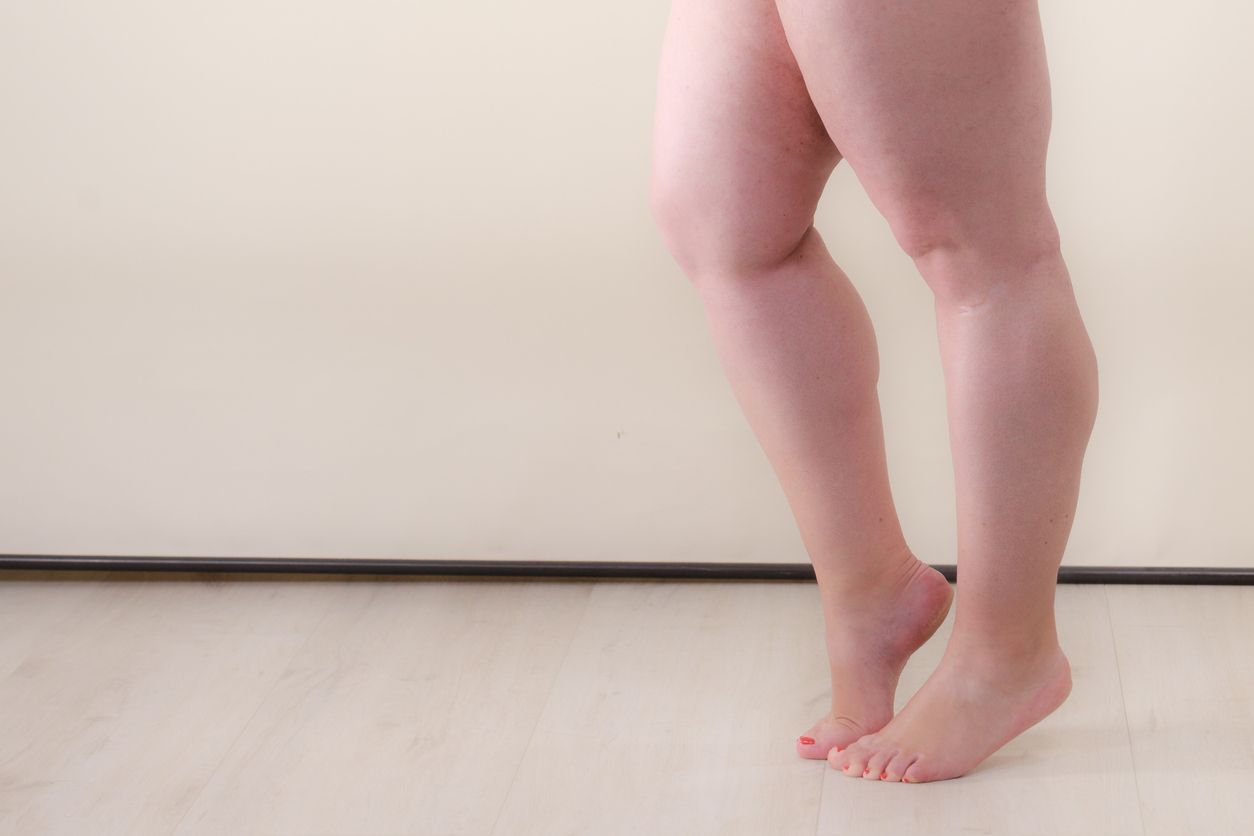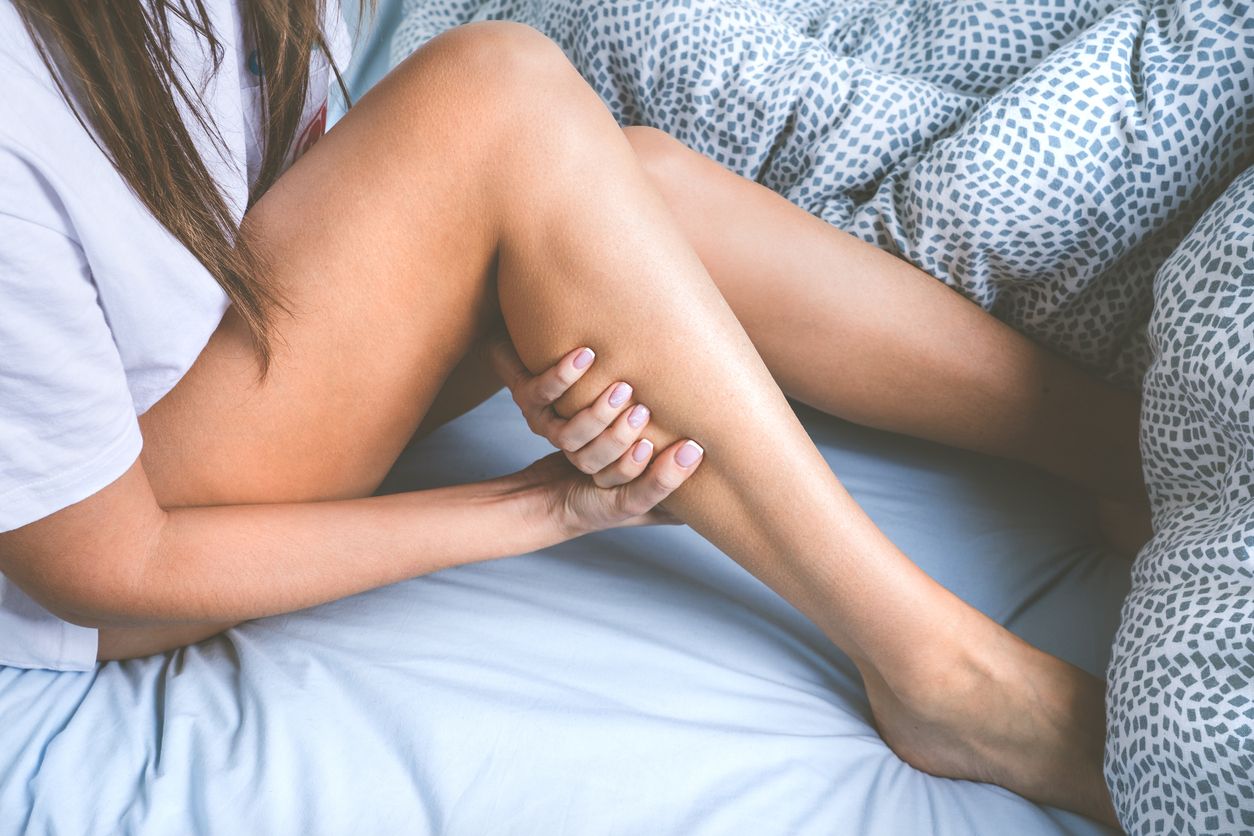- Home
- Trend
- Weight Loss Strategies
- Acne Tips
- Hair Health Information
- Blemish Removal Tips
- Acne Scar Removal Tips
- Muscle Building Techniques
- Intimate Care Tips
- Postpartum Intimate Care
- Eye Bags Wiki
- Tips for Face Slimming
- Secret of Permanent Hair Removal
- Breast Enlargement Tips
- Cure to Snoring
- Marionette Lines
- Skin-Tightening Secrets
免費體驗
S6 Body Sculpting Treatment
1 Minute Self-Registration
Date should not be before minimal date
Large calves can be a concern for many, both in terms of appearance and function. By understanding the factors that contribute to their size and exploring ways to manage it, you can achieve the leg shape you desire. This article explores the reasons behind big calves, effective exercises, and advanced treatments like the S6 Body Sculpting Treatment to help you manage calf size.
5 Main Reasons of Big Calves in Women

1. Genetics
Genetics plays a crucial role in determining the size and shape of your calf muscles. If you have a family history of large calves, it’s likely that you will inherit similar traits.
Theoretically, genetic factors influence various aspects of muscle development, including the composition of muscle fibres and the distribution of fat. This genetic predisposition can affect how and where your body stores fat and builds muscle, making large calves a common trait among family members.
2. Body Fat
Fat accumulation in the calves can contribute to their larger appearance. This often correlates with overall body fat percentage; individuals with higher body fat levels may notice that their calves appear larger due to increased fat deposits.
The distribution of fat throughout the body, including the calf region, is influenced by a combination of genetic factors and lifestyle choices, such as diet and physical activity levels. Higher body fat levels can make calves look fuller and less defined.
3. Muscle Mass
Engaging in exercises that specifically target the calves, such as calf raises, can lead to increased muscle mass. This hypertrophy occurs as the muscle fibres adapt to the repetitive stress and resistance, resulting in larger, more defined calves.
Also, regular participation in activities like running, sprinting, and jumping rope places a significant load on the calf muscles. These high-impact activities stimulate muscle growth and can lead to more prominent calf muscles over time.
4. Health Conditions
- Lymphedema: This is a condition characterised by the accumulation of lymphatic fluid in the tissues, which leads to swelling. This swelling often occurs in the legs and calves, causing them to appear larger and feel heavier. Lymphedema can result from damage to the lymphatic system, which might be due to surgery, radiation therapy, or congenital issues.
- Chronic Venous Insufficiency (CVI): Chronic Venous Insufficiency (CVI) is a condition where the veins in the legs have difficulty returning blood to the heart effectively. This leads to blood pooling in the veins of the lower extremities, including the calves. The condition is often due to weakened or damaged vein valves that fail to prevent backflow of blood.
5. Obesity
Carrying excess body weight can contribute to larger calves. The increased load on the leg muscles from carrying extra weight can lead to muscle hypertrophy. Additionally, fat accumulation in the calf area can make the calves appear bulkier.
If you fail to adopt a healthy diet and engage in regular physical activity, your overall body weight and the size of the calves are going to increase too.
The Last Reason: Why Avoiding High Heels Can Be Good for Managing Big Calves

Yes. You read it right. The last reason is actually regularly wearing high heels, which can contribute to larger calves over time.
High heels, while fashionable, can contribute to increased calf muscle engagement and potentially lead to muscle growth over time. When you wear high heels, the calf muscles are constantly engaged to stabilise your posture and support your weight. This constant contraction can lead to hypertrophy, or the increase in muscle size, which might make your calves appear larger.
To manage calf size effectively, consider the following practical adjustments:
- Opt for Flat Shoes: Choose shoes with a flat or low heel to reduce calf muscle engagement. Flats, sneakers, and other low-heeled footwear allow your calf muscles to remain relaxed and less engaged, which can help prevent additional muscle growth.
- Alternate Footwear: If you need to wear heels for specific occasions, try to limit their use and alternate with more supportive and comfortable shoes. This approach reduces the overall time spent in high heels and helps prevent muscle overdevelopment.
- Incorporate Footwear Adjustments: When possible, select shoes that provide adequate arch support and cushioning. Well-cushioned shoes can help reduce the strain on your calves and minimise unnecessary muscle engagement.
- Gradual Transition: If you're accustomed to wearing high heels, gradually transition to lower-heeled or flat shoes to give your calf muscles time to adjust. Sudden changes in footwear can lead to discomfort or other issues, so a gradual transition can help your body adapt more comfortably.
Big Calves: Fat or Muscle of the Body?

Besides these reasons, understanding the distinction between big calves due to fat and those due to muscle growth is essential for determining the most effective approach to managing or enhancing their appearance. First, try these steps to identify your calf composition:
1. Feel the Texture: Use your hands to gently press on your calves. If the area feels soft and squishy, it's likely fat. If it feels firm and solid, it's more likely muscle.
2. Examine the Definition: Look at your calves in the mirror, especially after exercise. Check for visible muscle definition. Defined lines and contours suggest muscle, while a rounded, smooth appearance may indicate fat.
3. Assess Your Strength and Endurance: Perform calf-specific exercises like calf raises or toe taps. If you notice significant muscle engagement and improved performance over time, the size is likely due to muscle. If there's minimal engagement or fatigue, it might be fat.
Once you have checked, you can refer to this detailed explanation on the difference between calves with fats or muscles:
Appearance
This plays a significant role in differentiating fat-based from muscle-based calves. As mentioned above, calves with excess fat tend to be softer to the touch and lack the firmness of muscular calves. They often appear rounded and less defined, blending into the overall body fat distribution.
In contrast, muscular calves are firmer and more resilient, exhibiting clear muscle definition and contours. The visible separation between muscle groups, such as the gastrocnemius and soleus, gives these calves a more athletic and toned appearance.
Composition
The composition of the calves further highlights the difference. Fat-based calves are primarily composed of adipose tissue, with minimal muscle development. The fat accumulation can obscure the underlying muscles, resulting in a softer appearance.
On the other hand, muscle-based calves are predominantly made up of lean muscle tissue, developed through targeted strength training exercises. This muscle growth enhances definition and contributes to a more sculpted look.
Functionality and Performance
Functionality and performance are also affected by whether the size of the calves is due to fat or muscle. Fat-based calves may experience reduced muscle strength and endurance, which can impact overall physical performance and mobility. The excess fat can limit the efficiency of movement and athletic activities.
Muscular calves, however, offer increased strength and endurance, contributing to better performance in activities that require lower body strength. The developed muscle mass supports balance, stability, and overall athletic capabilities.
Other Underlying Causes
Underlying causes for larger calves due to fat or muscle differ significantly. Fat-based calves are often linked to overall body fat percentage, influenced by diet, exercise habits, and genetics. High body fat levels result from poor dietary choices and a sedentary lifestyle, which can lead to fat accumulation in the calves.
In contrast, muscle-based calves result from targeted exercises like calf raises, running, or jumping rope. These activities specifically engage and build the calf muscles, contributing to their larger size.
Health Implications
The health implications of having larger calves due to fat or muscle are also distinct. Fat-based calves can be associated with health risks linked to obesity, such as heart disease, diabetes, and joint issues. Excess body fat often has broader health implications beyond just calf size and can affect overall metabolic health.
Conversely, muscular calves generally offer improved health benefits, including increased metabolism, better circulation, and stronger joints. The development of muscle mass supports overall fitness and can contribute to a healthier and more active lifestyle.
Simple Exercises to Manage Calf Size

When aiming to manage calf size, particularly when the calves are larger due to fat rather than muscle, start doing some exercise can be beneficial. Here's a closer look at exercises that can help in this regard:
Calf Raises
To start, stand with your feet shoulder-width apart. Lift your heels off the ground, focusing on engaging your calf muscles, and then slowly lower them back down. Repeat this movement as necessary. While calf raises are traditionally used to strengthen the calf muscles, reducing their frequency or intensity can be a strategic approach if your goal is to manage calf size.
This exercise promotes muscle endurance and definition, but excessive focus on calf raises can contribute to increased muscle size. By moderating the number of repetitions and sets, you can avoid exacerbating muscle growth while still maintaining muscle tone.
Jumping Rope
Begin by standing with your feet together and holding a rope. Jump with both feet while swinging the rope under you. Keep your jumps low and controlled to minimise strain on your calf muscles.
Jumping rope is an excellent cardiovascular exercise that helps in overall fat burning. It can contribute to slimming down the legs and calves by increasing calorie expenditure and improving cardiovascular health. Since it is a high-impact activity, be mindful of the intensity to avoid overworking the calves, which can lead to the opposite effect, which is increased muscle size.
Leg Exercises
Engage in a variety of leg exercises that target multiple muscle groups rather than focusing exclusively on the calves. Exercises such as squats and lunges are effective.
For squats, start by standing with your feet shoulder-width apart, lower your body as if sitting back into a chair, and then push through your heels to return to the standing position.
For lunges, step forward with one leg, lowering your body until both knees form 90-degree angles, and then return to the starting position. These compound movements involve the entire lower body and help in achieving a balanced leg shape.
免費體驗
S6 Body Sculpting Treatment
1 Minute Self-Registration
Date should not be before minimal date
S6 Body Sculpting Treatment: A Solution to Slim Your Calves

If your large calves are primarily due to excess fat, focusing on overall weight loss is more important. While the exercises you mentioned can help tone the calf muscles, they might not significantly reduce the overall size if fat is the main culprit. As such, the S6 Body Sculpting Treatment by Perfect Medical offers a non-invasive alternative specifically designed to address stubborn fat.
The S6 Body Sculpting Treatment utilises advanced techniques to target and reduce fat. The process begins with bio-lasers, which effectively break down fat cells in the targeted areas, releasing fatty acids. Following this, vacuum suction technology is used to enhance lymphatic drainage, assisting in the removal of these fatty acids from the body. This method is non-invasive, meaning it does not involve injections or medications and is completely painless.
How S6 Can Help You With Big Calves?
The S6 Body Sculpting Treatment is renowned for its effectiveness in targeting stubborn fat deposits in areas such as the calves, waist, abdomen, arms, thighs, and hips.
Unlike some treatments, it avoids the rebound effect, where fat cells regenerate after treatment. Instead, it permanently destroys fat cells, leading to long-lasting results. Our clients often notice significant improvements following their first session, and the procedure is both safe and painless, offering a comfortable experience without side effects.
Halving Your Calves with The Right Way Today

Addressing large calves effectively involves a combination of understanding the root causes and employing appropriate solutions, including exercises, shoes adjustments, and advanced treatments like the S6 Body Sculpting Treatment. With these approaches, you can achieve the desired calf size and enjoy a balanced and aesthetically pleasing leg shape. Contact us for a trial now!
Perfect Medical‘s S6 Body Sculpting Treatment免費體驗
S6 Body Sculpting Treatment
1 Minute Self-Registration
Date should not be before minimal date
FAQ

1. What is the best way to reduce calf fat?
To effectively reduce calf fat, focus on a combination of overall fat loss strategies. Incorporate cardiovascular exercises such as running, cycling, or swimming to burn calories. Additionally, a balanced diet with a calorie deficit can help reduce body fat. While specific calf exercises might not reduce fat in that area alone, they can help tone the muscles and improve the appearance of your calves.
2. How can the S6 Body Sculpting Treatment complement my efforts to reduce calf fat?
The S6 Body Sculpting Treatment can complement your fat reduction efforts by providing a targeted approach to eliminating stubborn fat. While diet and exercise work to reduce overall body fat, the S6 treatment focuses on breaking down and removing fat cells specifically in the calf area. This dual approach can enhance your results, leading to a more defined and slimmer appearance in the calves.
3. Is there a way to reduce calf fat without surgery?
Yes, there are non-surgical methods to reduce calf fat. Implementing a consistent exercise routine that includes cardio and strength training, coupled with a healthy diet, can help in reducing overall body fat, including in the calves. Additionally, lifestyle changes such as staying hydrated and avoiding excessive salt can assist in managing fluid retention in the calves.
4. Are there any specific dietary changes that can help reduce calf fat?
While there's no way to target calf fat specifically through diet alone, reducing overall body fat can help. Focus on a balanced diet with lean proteins, whole grains, and plenty of fruits and vegetables. Reducing your intake of high-calorie, high-fat, and sugary foods can contribute to overall fat loss, which may eventually include the calf area.
5. Why is there sometimes nothing that seems to work for reducing calf fat?
If you're finding that nothing seems to work for reducing calf fat, it may be due to factors like genetic predisposition, overall body fat distribution, or insufficient caloric deficit. It's important to ensure that you're following a comprehensive approach that includes a balanced diet, regular exercise, and lifestyle adjustments. Sometimes, stubborn fat areas require patience and a consistent, long-term approach to see results.








